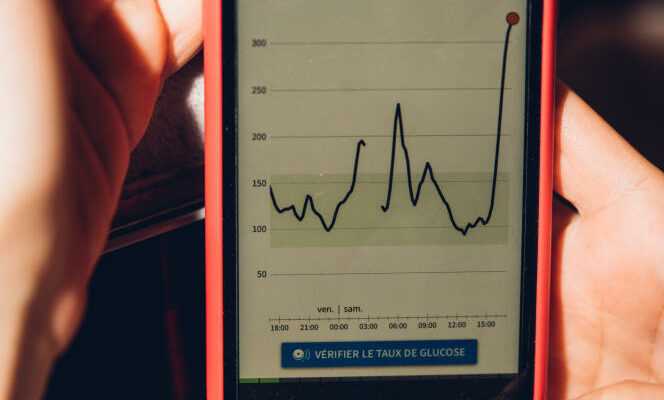This May day, three women and two men, on the sixth floor of the diabetology department of the Lariboisière hospital (AP-HP), took part in a workshop, in order to test a new system to treat their type 1 diabetes. Called “semi-closed loop” or improperly “artificial pancreas”, the device combines an external insulin pump, a continuous glucose measurement sensor and a terminal, which hosts algorithms to regulate the administration of insulin. The management of these can be physically separated (smartphone or connected tablet), or integrated into the pump. Patients are hospitalized for five days to familiarize themselves.
One hundred years after the discovery of insulin, it is still the hormone that cures, but the quality of the product and its method of administration have changed considerably. Its discovery then its administration, in 1922, in Toronto (Canada), by a multidisciplinary team made up of John Macleod (1876-1935), Frederick Banting (1891-1941) and Charles Best (1899-1978), turned the life of people who previously had no chance of survival. Banting and Macleod will obtain the following year the Nobel Prize for Medicine.
But back to Lariboisière. The five patients are all carriers of type 1 diabetes (T1D), which represents only 5 to 10% of diabetes cases. In its two forms, this chronic disease, defined by a blood sugar level greater than or equal to 1.26 g/l, measured twice, has been increasing steadily for twenty years. Estimates are 537 million patients worldwide in 2021, including 4.5 million in France.
In this file, we will focus on type 1 diabetes, called “insulin-dependent”. This autoimmune pathology is characterized by a total deficiency in the production of insulin, the hormone that reduces the level of glucose (sugar) in the blood, by the pancreas. T1D affects around two hundred thousand people in France. In type 2 diabetes, the pancreas still produces insulin, but it is less effective or in an inadequate quantity (this is called insulin resistance). In both cases, if left untreated, acute and chronic complications are numerous, and the risk of mortality increased.
Automated infusion
For these T1D patients, most of whom were diagnosed in childhood, daily life is punctuated by the measurement of blood sugar and insulin injections. However, the technology has evolved a lot, allowing many of them to no longer have to resort to injections. Born in the 1990s, insulin pumps, which now equip nearly 30% of type 1 diabetics, make it possible to avoid multiple daily injections of the hormone. At the same time, since the 2000s, access to continuous glucose sensors has put an end to the need for finger pricks for some. For about ten years, software has been used to automate insulin infusion based on blood glucose measurements taken by the sensor. Now, artificial intelligence is changing the game. “In thirty years of diabetology, I have never seen that, automated insulin therapy could revolutionize the daily lives of patients”observes Jean-Pierre Riveline, head of the University Center for Diabetes and its Complications (CUDC) in Lariboisière, which coordinates these training sessions.
You have 75.63% of this article left to read. The following is for subscribers only.
